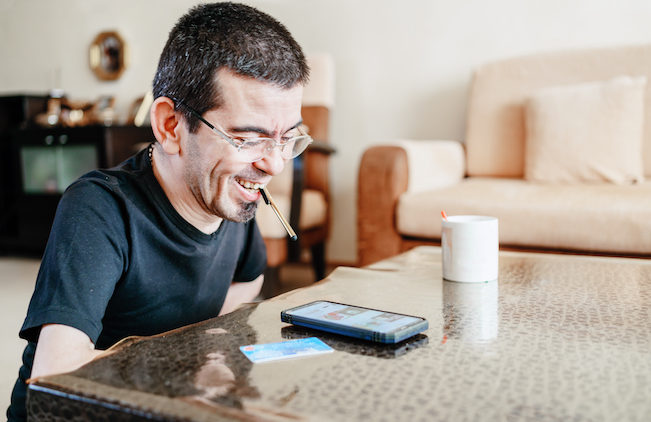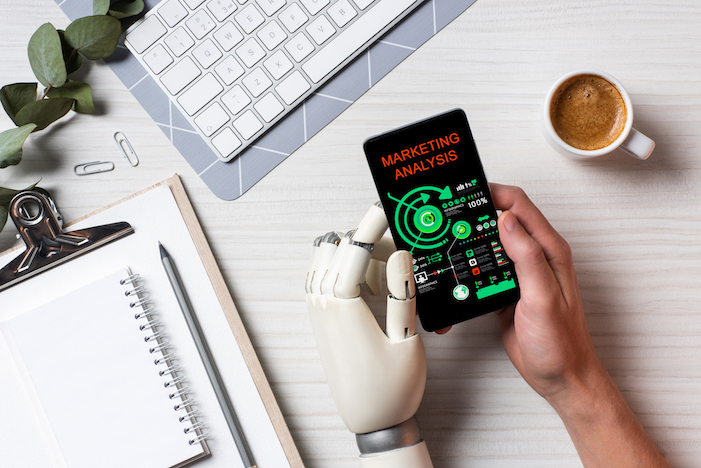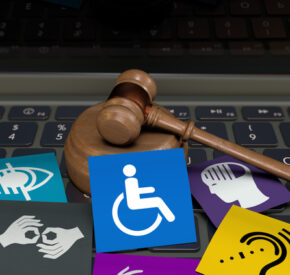Seeing the Unseen: Disability in the Spotlight
Social media boosts disability awareness by empowering diverse voices

Tamman is deeply committed to advancing accessibility in all its forms. We recognize a critical gap in disability representation across both the physical and digital worlds. While architectural barriers, like inaccessible curbs and elevators, are evident challenges, the media landscape also presents a glaring omission. Mainstream media has historically underrepresented individuals with disabilities. This lack of representation has created a distorted public perception of disability and often perpetuates harmful stereotypes or ignores their existence altogether. Social media offers a potential counterbalance, empowering individuals to share their experiences authentically. By sharing their everyday lives, triumphs, and challenges, these individuals are not only normalizing disability but also showcasing its incredible diversity. Through their platforms, they are fostering a more inclusive and understanding society, where disability is seen as a natural part of the human experience.
Disability Representation on Instagram: Voices You Need to Follow
Annasarol – Anna’s posts run the gamut from educational videos, to beautiful motivational performance pieces. Through her posts, she challenges societal perceptions and sheds light on the often-overlooked emotional impact of injury.
Chellaman – Chella Man is an artist, activist, model, and motivational speaker. He sends a strong message with each post, touching on topics like gender, religion, and politics. He highlights the role that intersectionality plays in inclusion and access.
Chrisunkim – Any football fans out there might recognize Christine Sun Kim from her ASL performance of the National Anthem at Super Bowl LIV. She is a sound artist whose work has been shown all over the world, and recently in Times Square. She shares bits of her journey as a mother, and an American living in Berlin.
Jordan.asl – Jordan, an ASL student, shares videos showcasing children learning ASL in the classroom. These videos offer a unique perspective on the dynamics of ASL education, previously unavailable to the public. Viewers gain insights into adapted classroom activities, ASL grammar, and the process of children acquiring a language specifically designed for them.
Thejourneyofabravewoman – Marcela posts about all of her travel experiences as a woman using a wheelchair. One of her posts documented her climbing Mt Kilimanjaro. She shows her journey using new assistive technology, and is a strong advocate for accessibility.
Rollettes_la– An LA-based wheelchair dance team. These women have been making entertaining videos during quarantine that also educate fans about the everyday experiences of wheelchair users. You can follow a number of the Rollettes individually and see for yourself how funny they are off the dance floor.
Habengirma – Haben Girma is a widely respected disability rights lawyer, as well as a public speaker and author. Her posts are about civil rights, her experience being the first deafblind graduate of Harvard, and journeys with her guide dog, Mylo.
Wheelchair_rapunzel – Alex is a passionate advocate for the representation of disabled bodies. As the body and sex-positive movement gains momentum online, her perspective offers valuable insights for everyone. With numerous social justice issues demanding attention, intersectionality is paramount to ensuring that progress benefits all, leaving no one marginalized.
Blindjoyross – We discovered Joy’s account while searching for Braille playing cards online. A video featuring Joy’s enthusiasm for a Braille version of the card game UNO caught our attention. She expressed her delight in finding a game she could share with her children. A singer by profession, Joy shares solo and duet performances with friends on her account, often featuring her guide dog, Arabella, in accompanying stories. Notably, all her posts include detailed alternate text descriptions.
aslpinnacle – ASL Pinnacle, founded by Deaf ASL expert Jason Gervase, offers online American Sign Language classes. Born and raised in Arizona, Gervase has dedicated his career to making ASL accessible to everyone. With a Master’s degree and global teaching experience, he provides a range of ASL lessons, from beginner to advanced, through his account.
spencer2thewest – Spencer West is a trailblazing motivational speaker, content creator, and activist who is redefining what it means to live with a disability. He boldly showcases the richness and fullness of life with a disability, from navigating everyday challenges to conquering extraordinary adventures. Through his inspiring content, Spencer demonstrates that individuals with disabilities can experience love, travel, fulfilling careers, and vibrant social lives.
Social Media: A Window into Accessibility
Delving into the world of accessibility and disability reveals social media as an invaluable source of knowledge. While formal certifications and courses provide essential foundations in laws and standards, a deeper understanding requires direct connection with lived experiences. Recognizing that every individual engages with the world uniquely is paramount to creating truly accessible environments. By expanding one’s social media network to include diverse perspectives, not only does one broaden their understanding of human ability but also inspires innovative solutions for inclusive design.





